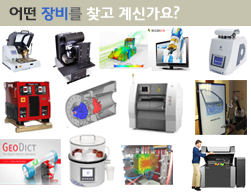| 타이틀 |
Lateral Load Testing of the Advanced Stirling Convertor (ASC-E2) Heater Head. |
| 저자 |
Cornell, Peggy A.;; Krause, David L.;; Davis, Glen;; Robbie, Malcolm G.;; Gubics, David A. |
| Keyword |
COMPUTERIZED SIMULATION;; DEFORMATION;; FINITE ELEMENT METHOD;; HEATERS;; LAUNCH VEHICLES;; LOAD TESTS;; MODULES;; PISTON ENGINES;; RADIOISOTOPE HEAT SOURCES;; STATIC TESTS;; STIRLING CYCLE |
| URL |
http://hdl.handle.net/2060/20110023434 |
| 보고서번호 |
NASA/TM-2011-217103 |
| 발행년도 |
2011 |
| 출처 |
NTRS (NASA Technical Report Server) |
| ABSTRACT |
Free-piston Stirling convertors are fundamental to the development of NASA''s next generation of radioisotope power system, the Advanced Stirling Radioisotope Generator (ASRG). The ASRG will use General Purpose Heat Source (GPHS) modules as the energy source and Advanced Stirling Convertors (ASCs) to convert heat into electrical energy, and is being developed by Lockheed Martin under contract to the Department of Energy. Achieving flight status mandates that the ASCs satisfy design as well as flight requirements to ensure reliable operation during launch. To meet these launch requirements, GRC performed a series of quasi-static mechanical tests simulating the pressure, thermal, and external loading conditions that will be experienced by an ASC-E2 heater head assembly. These mechanical tests were collectively referred to as "lateral load tests" since a primary external load lateral to the heater head longitudinal axis was applied in combination with the other loading conditions. The heater head was subjected to the operational pressure, axial mounting force, thermal conditions, and axial and lateral launch vehicle acceleration loadings. To permit reliable prediction of the heater head s structural performance, GRC completed Finite Element Analysis (FEA) computer modeling for the stress, strain, and deformation that will result during launch. The heater head lateral load test directly supported evaluation of the analysis and validation of the design to meet launch requirements. This paper provides an overview of each element within the test and presents assessment of the modeling as well as experimental results of this task. |






.gif)














